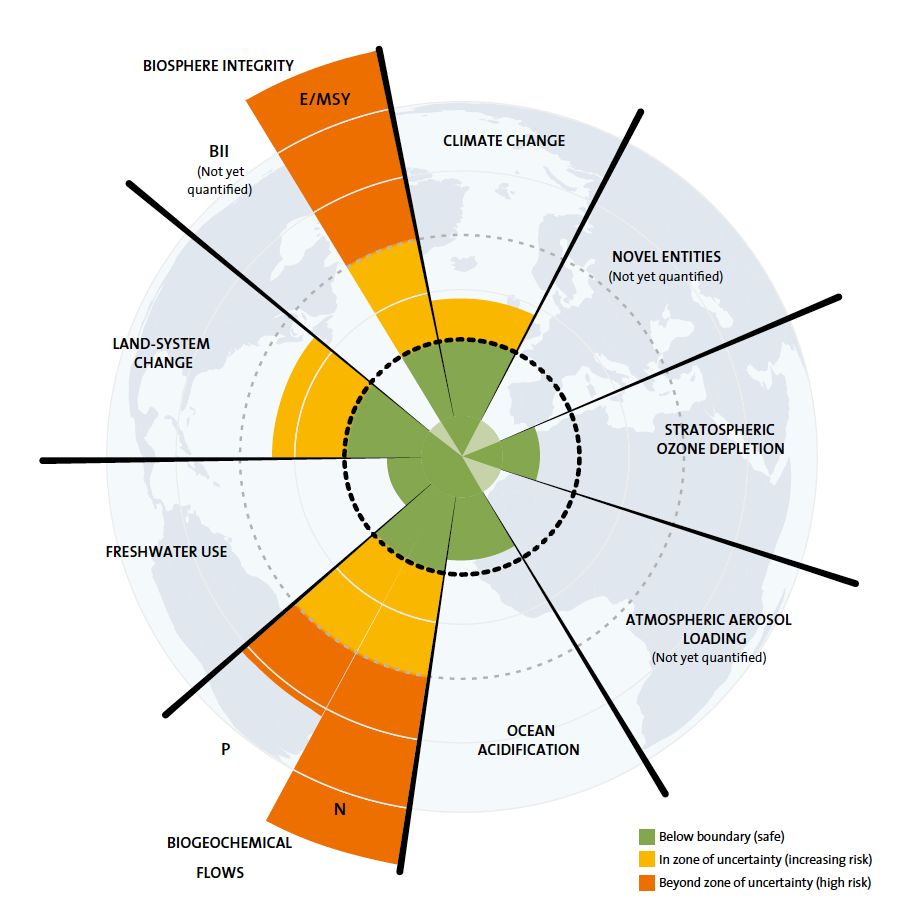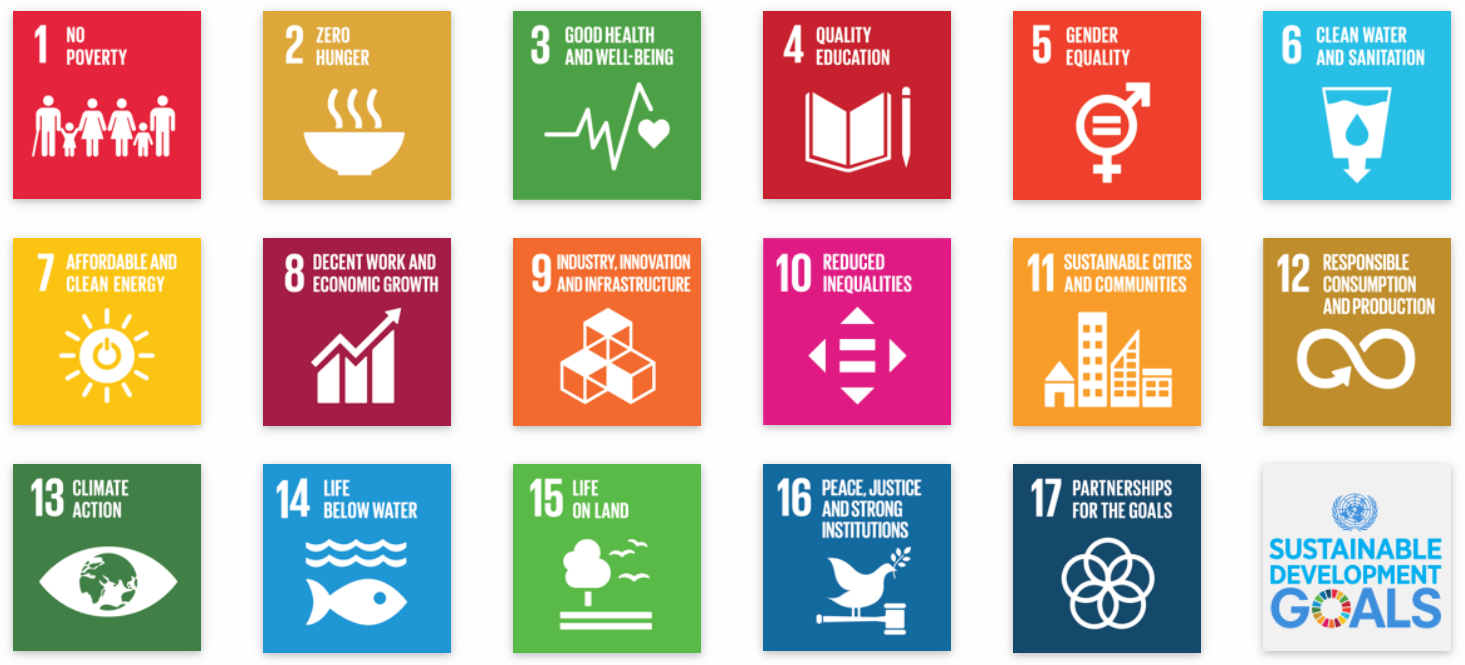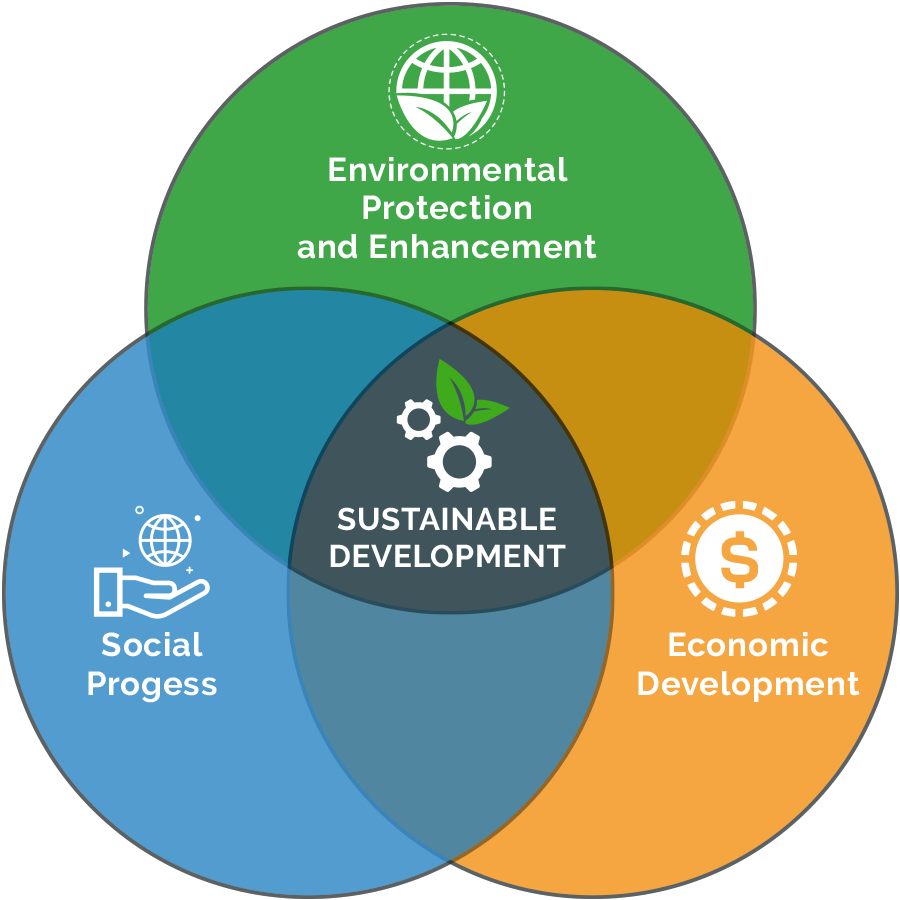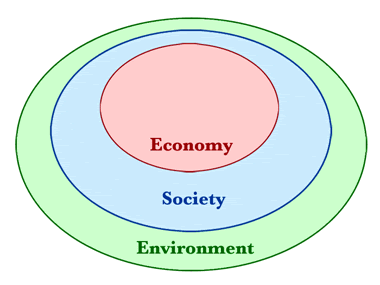A sustainable world. What does this mean and how to achieve it


· 12 min read
We live in a limited world, but we behave as if the resources and biosphere capabilities of the Earth are inexhaustible. In the middle of the 20th century, humanity came to understand the limits of the planet, beyond which it is impossible to go without harming itself. This is how the idea of the need for socio-ecological-economic balance was born. To achieve global balance and avoid catastrophic consequences from anthropogenic impact on the Earth’s ecosystem, the world community at the UN level adopted the concept of sustainable development. Not only countries should follow it, but also businesses as one of the main potential drivers of responsible behavior.
The concept of sustainable development is inextricably linked with the negative results of the industrial revolution. Since the end of the 19th century, people began to realize that their activities had a detrimental effect on the environment, and the accepted economic model did not lead to social equality. Nevertheless, the idea of sustainable development began to be actively developed only in the 60s–70s of the 20th century.
In the summer of 1970, an international team of researchers from the Massachusetts Institute of Technology, led by Dennis Meadows and commissioned by the Club of Rome, began studying the possible environmental and social consequences of continued population growth. Already in 1974, its population exceeded the 4 billion mark. In just 200 years, the world population has grown from 900 million to almost 8 billion people. By 2100, the UN estimates that there will be between 10 and 11 billion people living on Earth.
The researchers used the World3 computer model to predict the impact of human activity on the global economy. The model was based on five variables: population growth, food supply, depletion of non-renewable resources, industrial production, and environmental pollution. In 1972, a report was published on the results of their work — The Limits to Growth.
Scientists formulated 12 scenarios, of which even the basic one (“if nothing is done”) by 2100 paints an unsightly picture of population decline, a sharp decline in living standards, and a food crisis. Here are the conclusions the team of researchers came to:
In 2004, an updated report, The Limits to Growth: 30 Years Later, was released. According to the authors, over 30 years, a lot has changed for the better: the level of income of the population has increased, and concern about the state of the environment has become much higher and has become widespread. Thanks primarily to technological development, humanity has managed to slow down the catastrophic processes that scientists predicted in the first report. But despite this, the researchers emphasized that the capabilities of technology are limited, and the main role in achieving a balanced state should belong to political changes and controlled social processes.
It has not been possible to resolve all social and environmental problems, and some of them have only intensified over time. According to the report’s authors, since the 1990s, humanity has crossed the line after which the Earth’s ecosystem can no longer reproduce. In practice, this may mean that rivers and lakes do not have time to clear themselves of the amount of pollution that gets there. It can also lead to deforestation, as the forest does not have time to regenerate or soil degradation — it takes more than 1,000 years to form one centimetre of soil.
Ecologists even introduced such a concept as the day of ecological debt — a conditional day when humanity spends all the Earth’s resources given for the year, and the planet’s ability to absorb waste is exhausted. This year, Ecological Debt Day fell on July 29th. So after 6–7 months, we start borrowing from the planet and future generations. We currently need 1.8 planets to maintain our current standard of living.
The authors of the book The Limits to Growth: 30 Years Later conclude that unless the consumption of natural resources is seriously adjusted, socio-economic and environmental collapse will occur within the lifetime of the current generation. What potential human-caused disasters does the report mention?
Increasing greenhouse gas emissions. The latest report from the Intergovernmental Panel on Climate Change (IPCC) confirms earlier assumptions that climate change is caused primarily by human influences. The scientists’ findings suggest that achieving the goals of the Paris Agreement and limiting temperature rise to 1.5 degrees Celsius by 2050 is almost impossible. The average temperature on the planet is about 1.1 degrees Celsius higher than in the pre-industrial period. Scientists have concluded that some processes associated with climate change are irreversible, such as sea level rise. It will continue to happen even if global warming is stopped.
To keep temperatures under 1.5 degrees Celsius by mid-century under the Paris Agreement, transport emissions must be cut by 80 percent from current levels. One option is battery-powered cars. Research shows that in Europe, electric vehicles produce 66 to 69 percent fewer greenhouse gas emissions over their entire life cycle when compared to gasoline vehicles. It is expected that in 10 years emissions will decrease further due to the overall decarbonization of electricity.
The International Energy Agency (IEA) estimates that investment in renewable energy will need to triple by 2030 to effectively combat climate change and keep volatile energy markets under control. In 2020, renewable energy sources accounted for about 12 percent of global energy generation. According to IEA experts, if investments in green energy remain at current levels, then by the end of the century, the global temperature will rise to 2.6 degrees Celsius.
The fight for fresh water. According to the UN, by 2050, 5.7 billion people could face water shortages. The main reason is ecosystem degradation and irrational use. Every year, people consume 4.6 thousand cubic kilometres of water, of which 70 percent comes from agriculture and 10 percent from households. Water consumption increases annually by about one percent.
Hunger. Despite the general increase in prosperity, the problem of hunger remains acute. According to UN estimates, 8.9 percent of the world’s population suffers from hunger, or about 690 million people (before the COVID-19 pandemic). This figure has increased by 60 million people in five years. The number of those experiencing food insecurity is also growing.
Extinction of biological species. According to the Intergovernmental Science-Policy Platform on Biodiversity and Ecosystems (IPBES), about a million species of plants, animals, and other organisms are threatened by human activity. The main factors are agriculture, urban growth, waste, emissions, and climate change. The average number of species has declined by 20 percent in regions where humans live since 1900. Scientists say that 25 percent of vertebrates, invertebrates, and aquatic animals are at risk, and about 10 percent of insects may soon become extinct.
Removal of forests. Legal and illegal deforestation remains one of the key problems for the Earth’s ecosystem. Forests are home to thousands of species and directly influence water quantity and quality, as well as climate change. Already, two-thirds of the world’s tropical forests have been destroyed or degraded. The area of primary forest has declined by 81 million hectares since 1990. However, over the past decade, the rate of decline has slowed. The main reasons for deforestation remain timber harvesting and the release of territories for agricultural needs.
The environmental crisis not only affects the Earth’s biosphere as our habitat, but it also affects the economy. According to estimates by the World Economic Forum and the consulting company PwC, almost half of the world’s GDP — US$44 trillion annually — depends on the state of the environment and ecosystem services. For example, UN experts estimate the global economic losses associated with air pollution at $5 trillion per year.
The “limits to growth” can be looked at from the perspective of the limits of the Earth’s biosphere, beyond which we cannot afford to go. In 2009, commissioned by the Club of Rome, an international group of scientists led by Johan Rockström of the Stockholm Resilience Centre and Will Steffen of the Australian National University released a report, “Renewal Is Possible,” in which they proposed the concept of “planetary boundaries.” Experts have identified key processes that, under the influence of destructive human activities, threaten the stability of the entire Earth system. Nine life support systems beyond which humanity is unable to go without risk to itself:
The researchers then estimated the limit of each process before the global system passes the threshold at which we put human existence at risk. Scientists have determined the boundaries of a safe space for human life on Earth.
According to the concept, the violation of one or more planetary boundaries can be harmful or even catastrophic, as it can cause dramatic environmental changes on a regional or planetary scale. However, we have already gone beyond planetary boundaries, at least for four of the nine limits: climate change, biodiversity loss, biogeochemical fluxes (imbalance of nitrogen and phosphorus) deforestation, and other landscape changes.

Nine life support systems, divided by risk level
Experts warn that these limits are approximate: no one knows how far we can push the limits before the cumulative pressure leads to irreversible consequences. Scientists suggest comparing this to a blindfolded person – no matter which direction he walks, he still goes to the edge of the cliff. We know there is a limit, but we don’t see it.
Avoiding meat and switching to a more plant-based diet can reduce greenhouse gas emissions by 29 to 70 percent. Food production accounts for between a quarter and one-third of all man-made greenhouse gas emissions worldwide. The main burden falls on the livestock industry.
The report “Renewal is Possible” is a kind of confirmation of the conclusions of the authors of “Limits to Growth”. The main result of both reports is that the world needs to develop and implement new economic models that could ensure sustainable development of society within the “planetary boundaries,” that is, without harming the environment. This is how the world community comes to the concept of sustainable development, or global balance, as the main strategy for all humanity.
The 1972 Limits to Growth report became a landmark report for the creation of the concept of sustainable development. In the same year, the Conference on Environmental Problems was held in Stockholm. World leaders have developed an action plan of 109 recommendations in five sections to overcome the current environmental crisis.
The main result of the Stockholm Conference was the creation of UNEP (December 15, 1972) — a program for environmental protection within the UN system. The motto of the program is “Environment for Development”.
The next important milestone was the report “Our Common Future” by the International Commission on Environment and Development in 1987. It was then that the definition of sustainable development first appeared, which has become classic: “development that meets the needs of the present without compromising the ability of future generations to meet their own needs.”
In 1992, the Earth Summit took place in Rio de Janeiro, where the obligations of states to achieve sustainable development — Agenda 21 — were formulated. The Declaration contained 27 principles of environmentally and socially responsible behavior for the world community, including fighting poverty, protecting forests from deforestation, protecting biodiversity, etc.
In 2000, the world community developed eight Millennium Development Goals, which were to become a global development strategy until 2015. MDG objectives:
Ending extreme poverty and hunger
Achieving universal primary education
Promoting gender equality and women’s empowerment
Reducing child mortality
Improving maternal health
Fighting HIV/AIDS, malaria and other diseases
Ensuring environmental sustainability
Forging a global partnership for development
In the final report, the UN noted progress in achieving the Millennium Development Goals: the number of hungry and poor people has decreased, the number of new HIV infections has decreased, and billions of people have gained access to clean water. However, the result was not positive for everyone. “Too many people are being left behind, especially those who are poorest and most vulnerable due to gender, age, disability, ethnicity or geography,” UN Secretary-General Ban Ki-moon said at the time.
The Millennium Development Goals have been replaced by new, more universal, and broader in scope — 17 UN Sustainable Development Goals (SDGs). The SDGs are a set of global development goals adopted by UN member countries in September 2015. They define the global development agenda until 2030.

Source: United Nations/UNESCO
The 17 SDGs focus on five key elements: people, planet, peace, prosperity, and partnership. They are divided into 169 objectives, and progress towards these goals is supposed to be monitored using 232 indicators.
According to the European Commission, 80 percent of the trash on the shores and beaches of European countries is plastic. For this reason, the EU has introduced a ban on single-use plastic items from July 2021, which is a more environmentally friendly alternative. Now cotton swabs, drinking straws, plastic cutlery, and other items are banned in Europe.
To achieve sustainable development goals, the active participation of business is necessary. To this end, the UN created the Global Compact initiative to expand sustainable business practices. More than 14,000 companies from 162 countries have now joined the Global Compact. Organizations that are part of this initiative are required to comply with the Sustainable Development Goals — which companies determine for themselves, based on their specifics.
Sustainable development involves economic growth that does not harm the environment and helps solve social problems. To achieve this, three pillars must be reconciled: economic growth, social justice, and environmental protection.
The graphic representation of the concept of sustainable development in the form of three intersecting spheres has become classic and most common. This approach presents the three systems as equal. But practice shows the opposite situation: the environmental sector is in a depressed position about short-term economic goals. As a result, there is a bias towards satisfying economic interests.

A classic look at the concept of sustainable development
An alternative view of sustainable development suggests that the three areas are mutually subordinate. The economic and social spheres are elements of the system, the main goal of which is to contribute to the preservation of the supersystem. An economy cannot exist separately from the people who make up society. In turn, society and the individual cannot exist outside the familiar environment.

An alternative view of the concept of sustainable development
This approach removes the contradictions between environmental requirements and socio-economic interests and shows that economic development is limited by the ability of the biosphere to recover. This approach also demonstrates that economic development is limited not only by the regeneration of ecosystems but also by social factors, including medical and biological ones (the COVID-19 pandemic).
illuminem Voices is a democratic space presenting the thoughts and opinions of leading Sustainability & Energy writers, their opinions do not necessarily represent those of illuminem.
Aaron Bruckbauer

Pollution · Greenwashing
Jesse Scott

Carbon Market · Carbon Regulations
Glen Jordan

Sustainable Lifestyle · Sustainable Living
Inside Climate News

Pollution · Nature
The Jerusalem Post

Biodiversity · Climate Change
earth.com

Climate Change · Effects